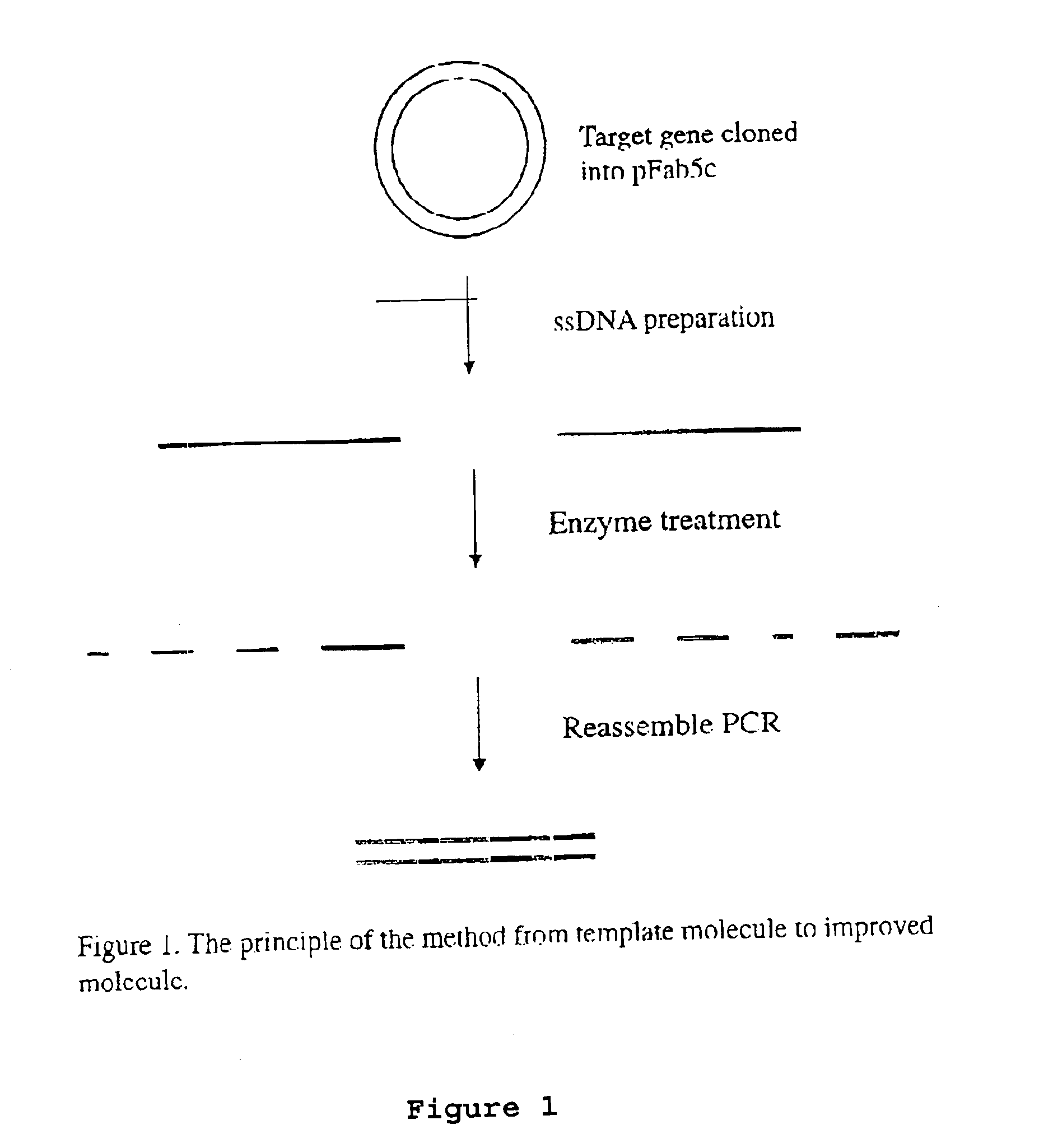Method for in vitro molecular evolution of protein function
a protein and function technology, applied in the field of in vitro molecular evolution of protein function, can solve the problems of docs not allowing for shuffling of individual gene segments, two strategies that do not include simultaneous, and generally produce non-functional genes
- Summary
- Abstract
- Description
- Claims
- Application Information
AI Technical Summary
Benefits of technology
Problems solved by technology
Method used
Image
Examples
Embodiment Construction
[0075]The DNA shuffling procedure can be illustrated by the steps shown in FIGS. 1-5. The gene encoding the protein of interest (X) in the plasmid pFab5chis is used in this example. Random mutations are introduced by error prone PCR. Single-stranded DNA is prepared. This can be carried out by either biotinylated primers or by the use of phage being able to pack single-stranded DNA, as discussed above. The coding and the non-coding ssDNA strands are prepared in different reactions (A and B). The ssDNA strands from either reactions are subjected to separate enzymatic treatment using e.g. BAL31. By mixing the two pools of single-stranded DNA fragments in equimolar amounts the gene can be reassembled in a shuffled nature and in many versions by the use of two subsequent PCR reactions, where the first reaction contains no primers. After cloning this library of reassembled genes in pY, selections can be performed to achieve the improved molecule of interest.
[0076]A more detailed descripti...
PUM
| Property | Measurement | Unit |
|---|---|---|
| volume | aaaaa | aaaaa |
| pH | aaaaa | aaaaa |
| pH | aaaaa | aaaaa |
Abstract
Description
Claims
Application Information
 Login to View More
Login to View More - R&D
- Intellectual Property
- Life Sciences
- Materials
- Tech Scout
- Unparalleled Data Quality
- Higher Quality Content
- 60% Fewer Hallucinations
Browse by: Latest US Patents, China's latest patents, Technical Efficacy Thesaurus, Application Domain, Technology Topic, Popular Technical Reports.
© 2025 PatSnap. All rights reserved.Legal|Privacy policy|Modern Slavery Act Transparency Statement|Sitemap|About US| Contact US: help@patsnap.com



